Just as I was ready to leave the house for birding this morning, something outside caught my eye. 3 Mourning Doves had just landed in a tree near the feeders and one was leucistic. It dropped down to one of the feeders and started eating seeds. What a nice surprise it was! After only a couple of minutes a Gray Squirrel dropped down to another feeder and flushed the 3 doves away. I found it interesting that Mourning Doves frequent the yard daily, usually 3-8 is common. I would assume they are typically the same birds, why would you think differently. I found out this is not true as this leucistic bird has never been seen here before. I hung around a while but the bird did not return. All images were shot through a window. Images were taken on December 29, 2018.
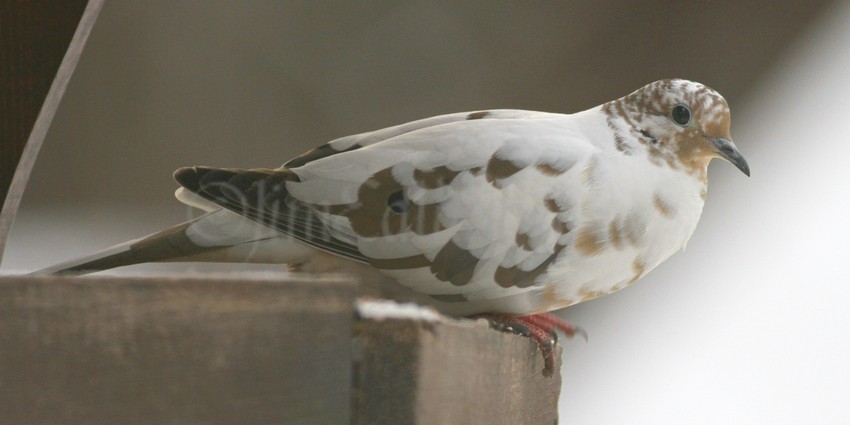
Mourning Dove, leucistic
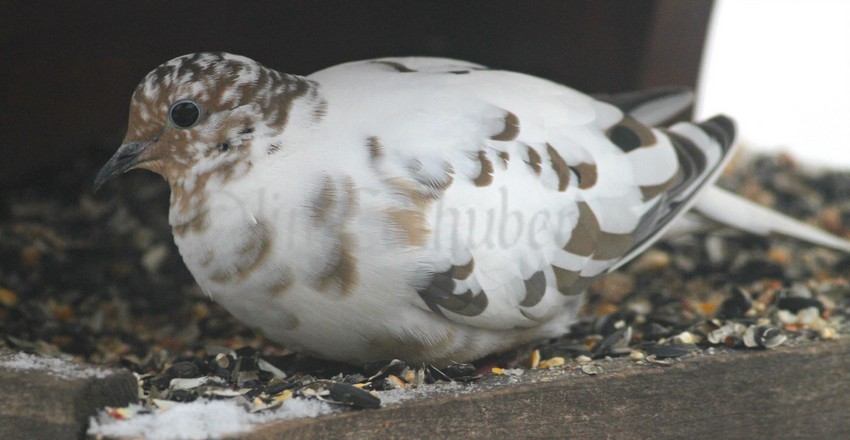
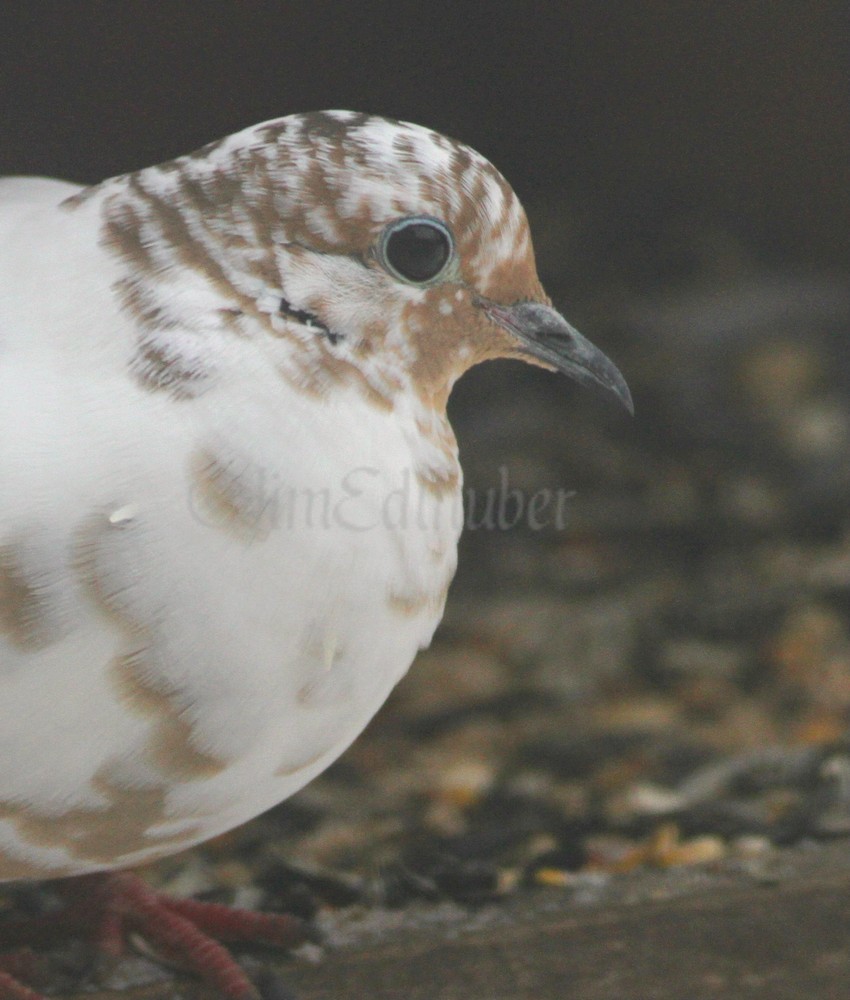
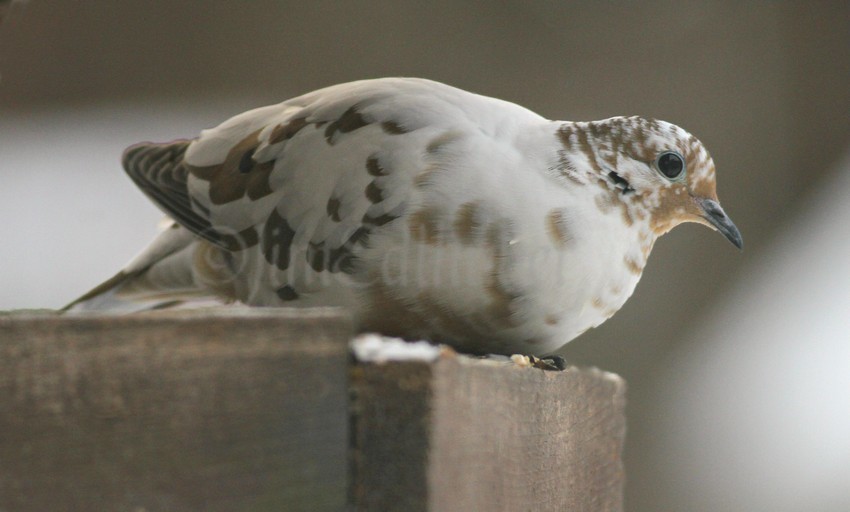
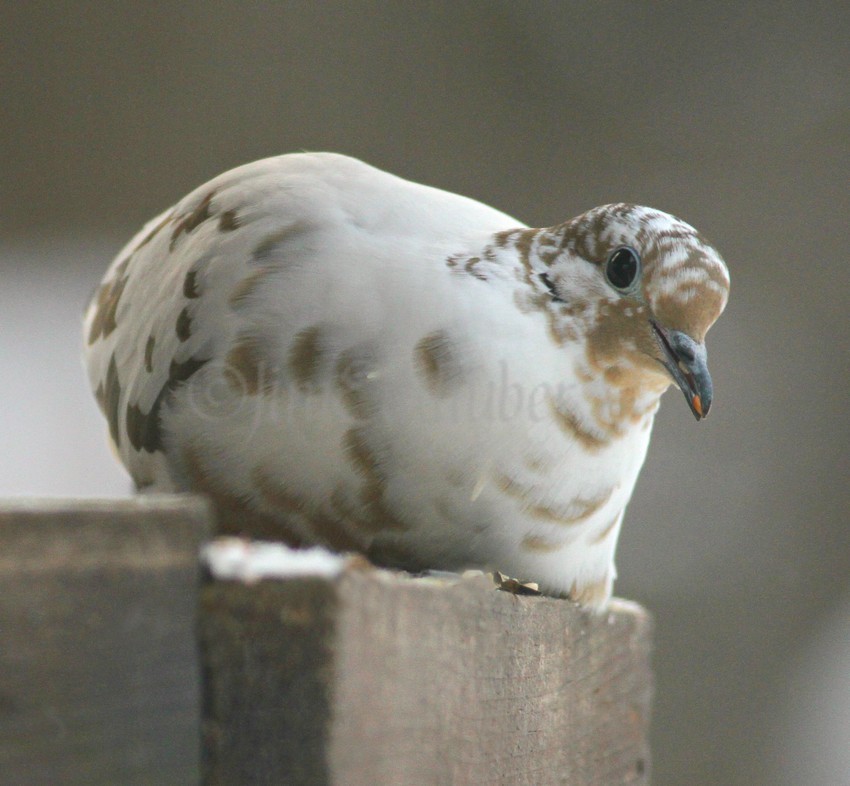
With seed in the bill…
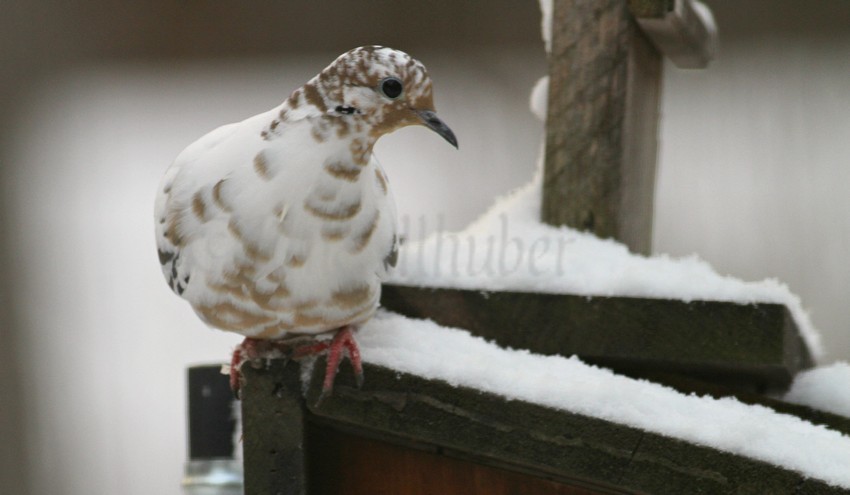
Comes down from the tree branch and looks at the feeder from above…
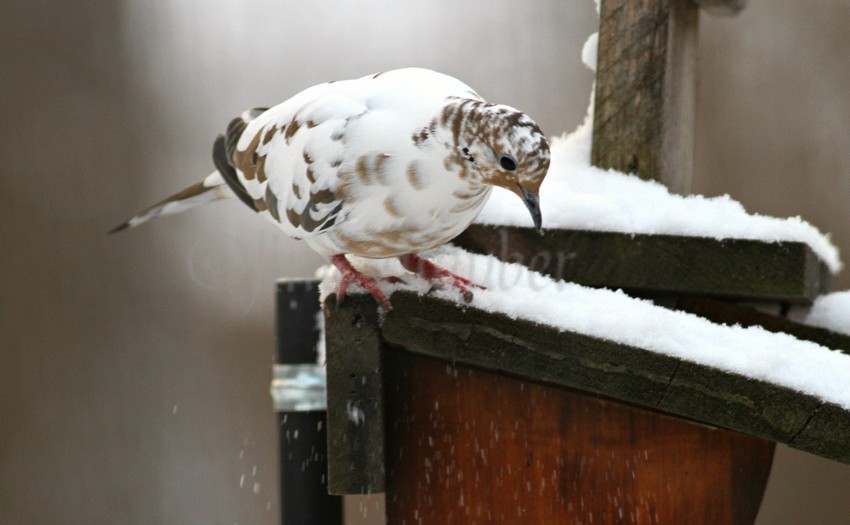
Takes a peek at the seed on the feeder…
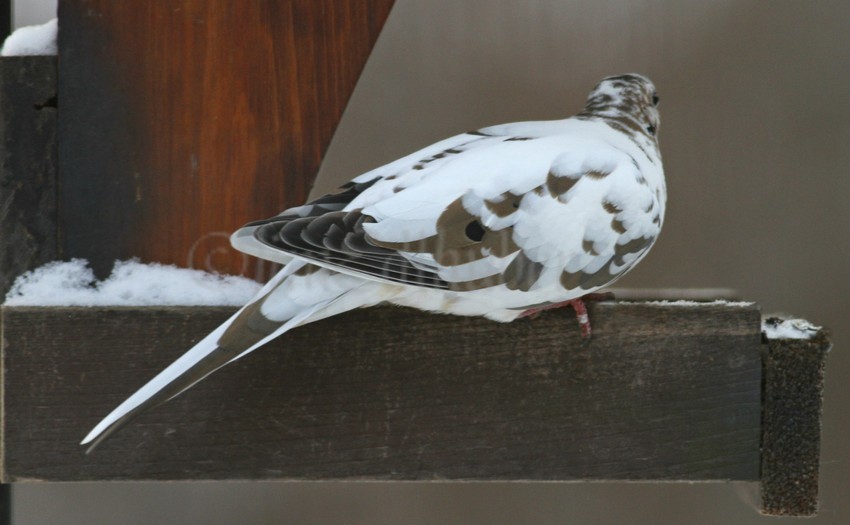
Looks at all the good things to eat in the feeder…Interesting, one tan tail feather and one white tail feather!
What is Leucism? Leucism is an uncommon condition in birds. This condition is caused by a genetic mutation which prevents pigments, particularly melanin, from being deposited evenly in the bird’s feathers. Leucistic birds have melanin elsewhere in their bodies which is why they may have dark eyes, legs, and bills. However, their true color will be missing or greatly reduced due to the lack of proper pigmentation.
What is Albinism? Leucism is similar to albinism as in both cases the birds may be completely white. However, albinism is defined as a complete absence of melanin in an animal. Truly albino species will have pink eyes as the only color seen will be caused by blood vessels behind their eyes. They will also have pink bills, legs, and feet. Albinism is extremely rare in birds.
Notes: Leucistic birds are extremely uncommon for a number of reasons. They are not thought to live very long because their white feathers make it difficult for them to hide from predators. If they do stay alive, it is difficult for them to find a mate and successfully pass on their genetic mutation. Additionally, the melanin found in regular birds adds strength to the feathers. Leucistic birds lacking melanin have weaker feathers and thus have a more difficult time flying in severe weather. Last, the reflective properties of white feathers may be problematic for birds who rely on solar energy for heat.

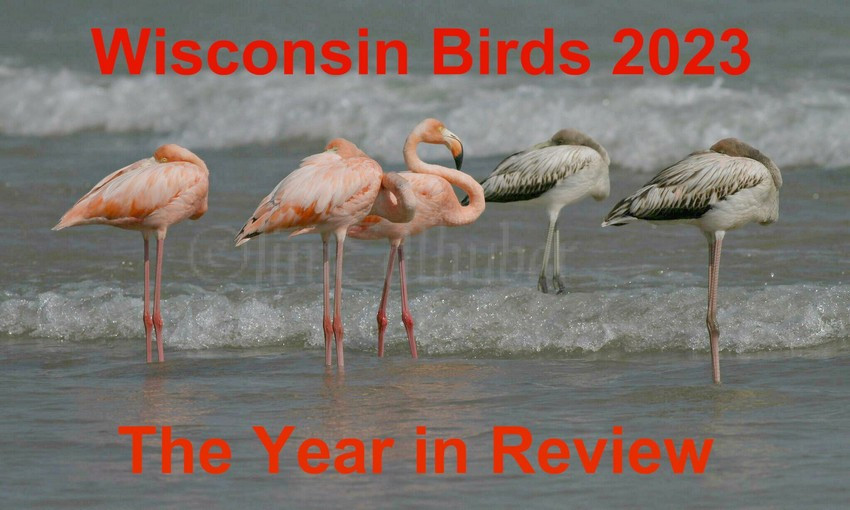
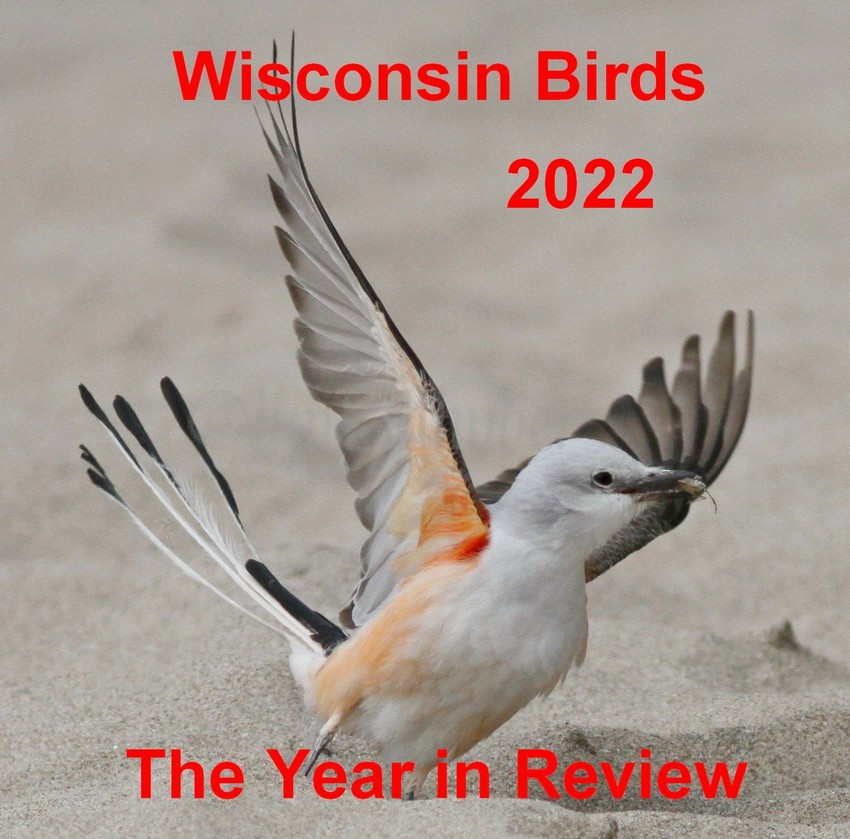
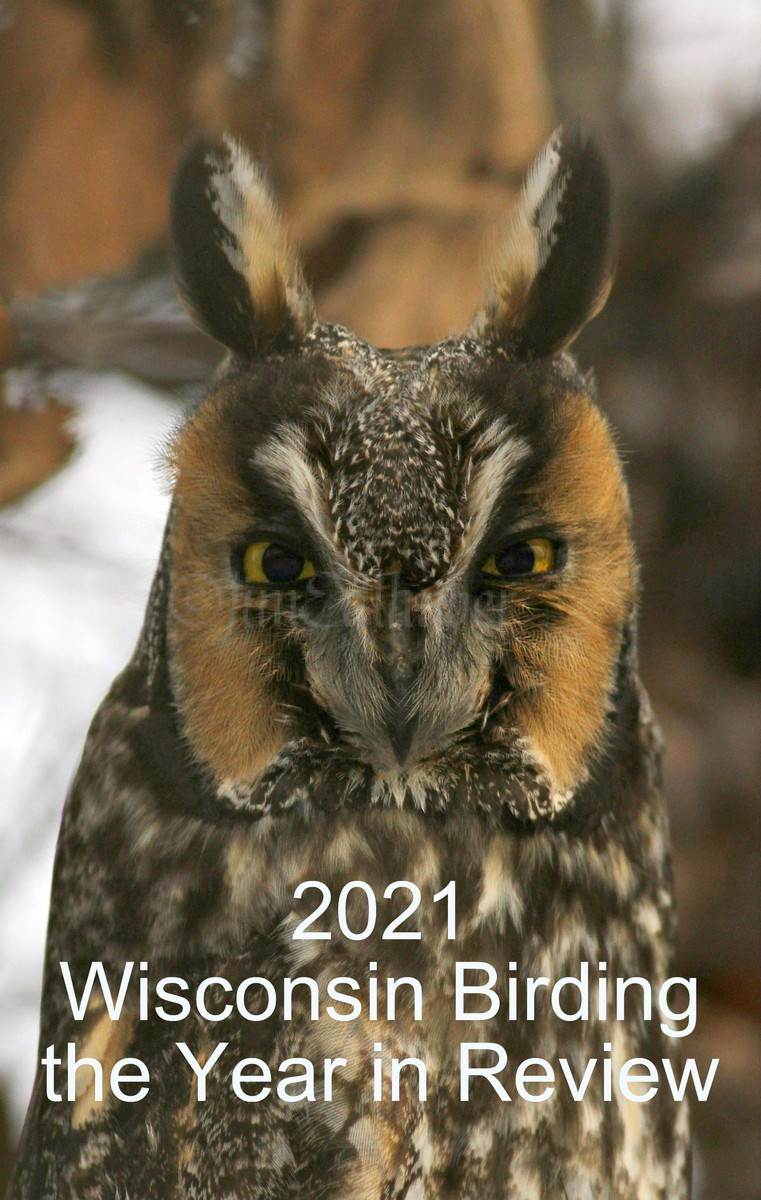
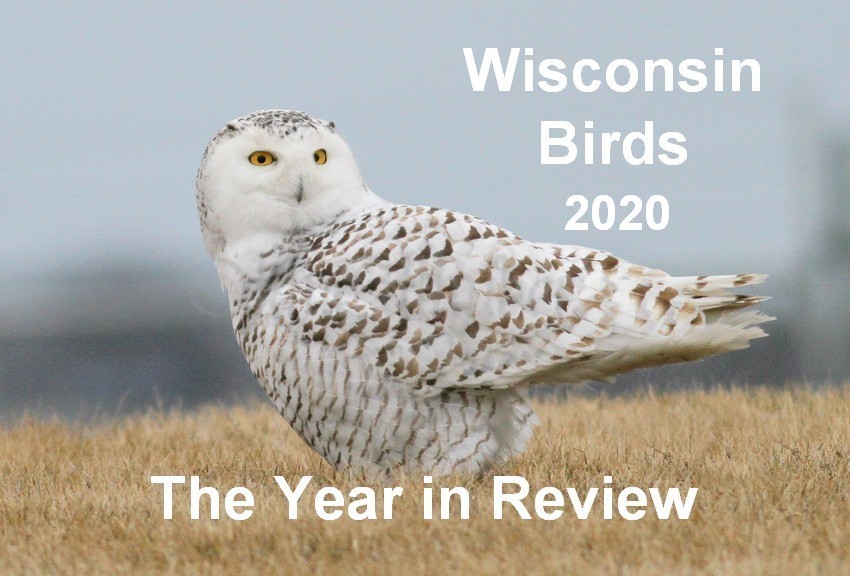
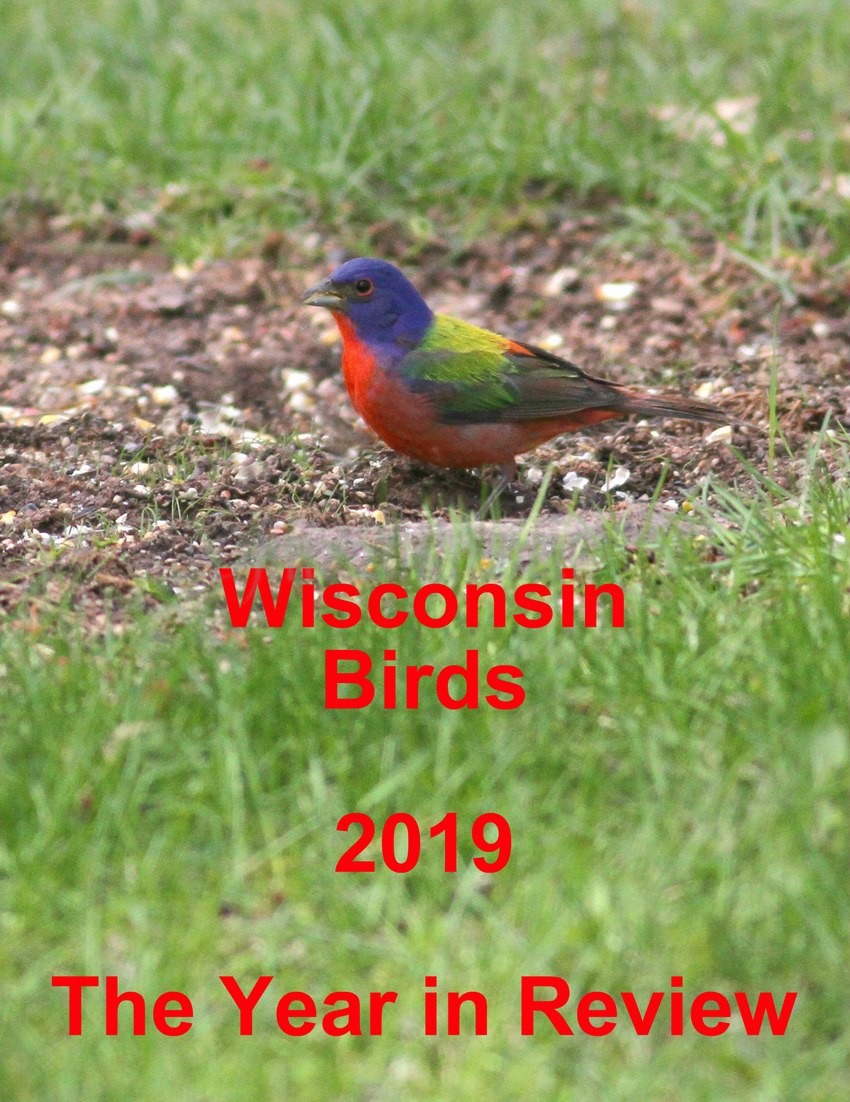
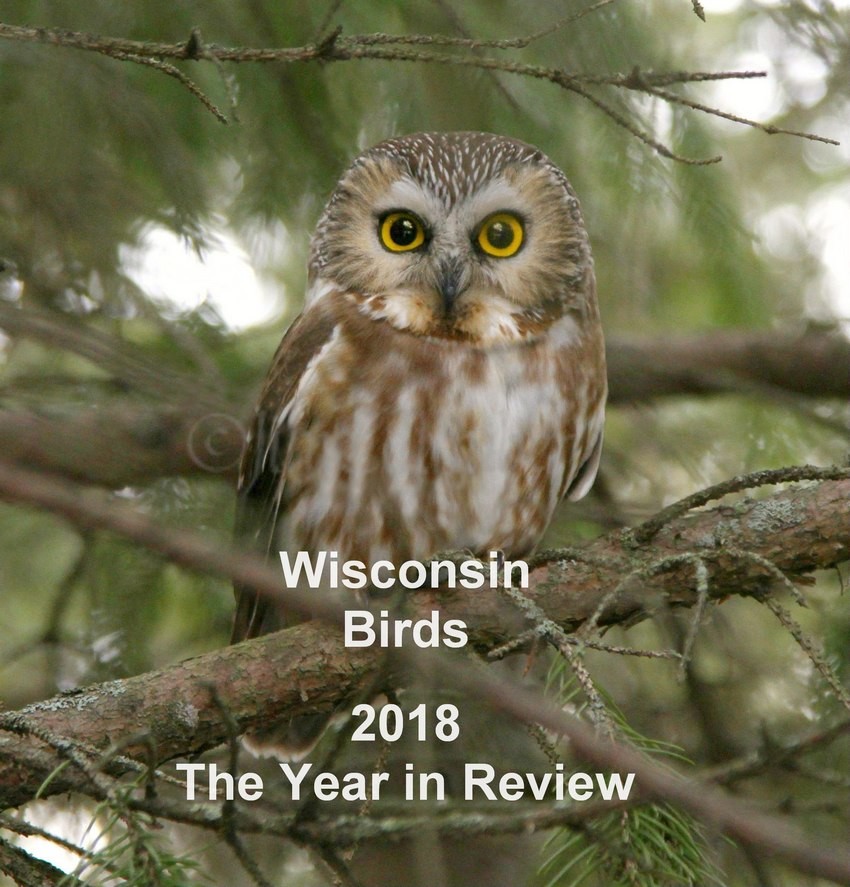
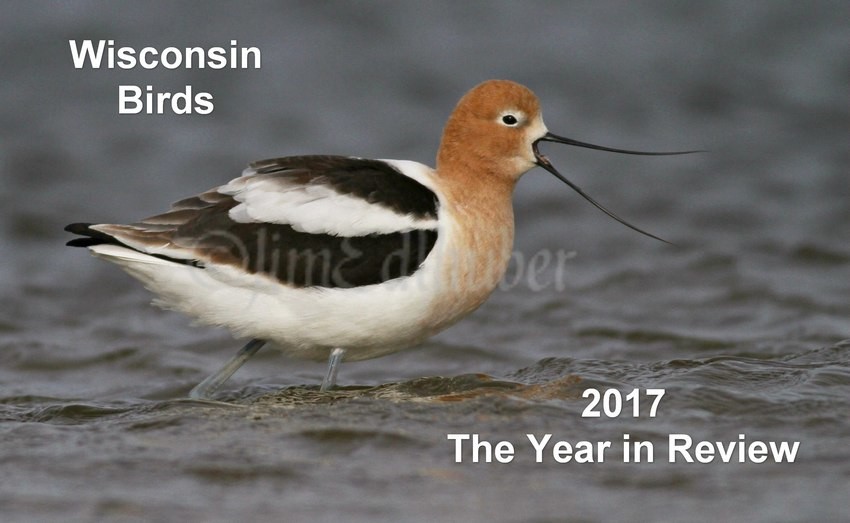
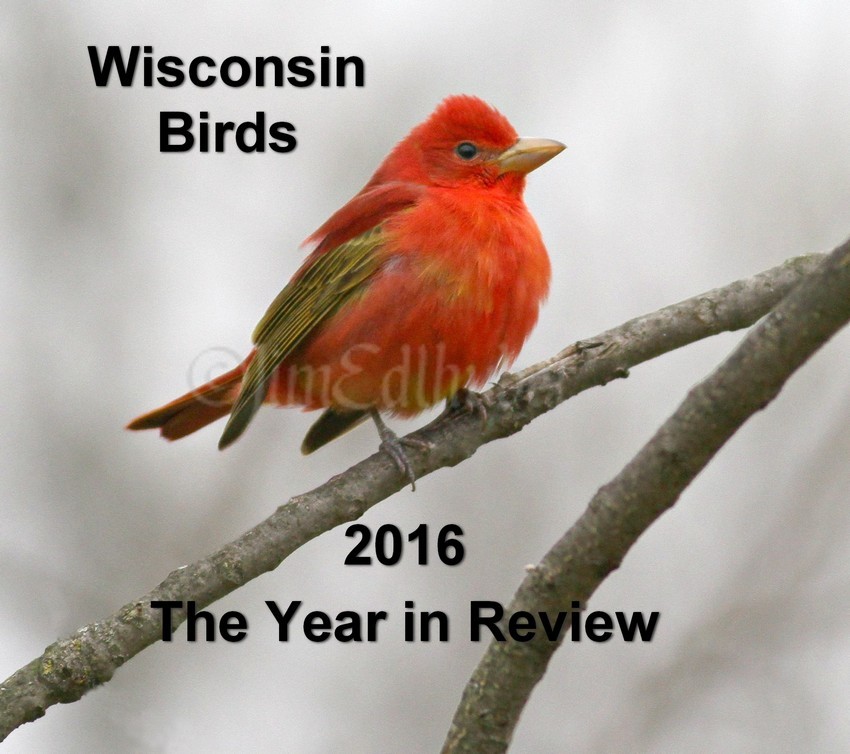
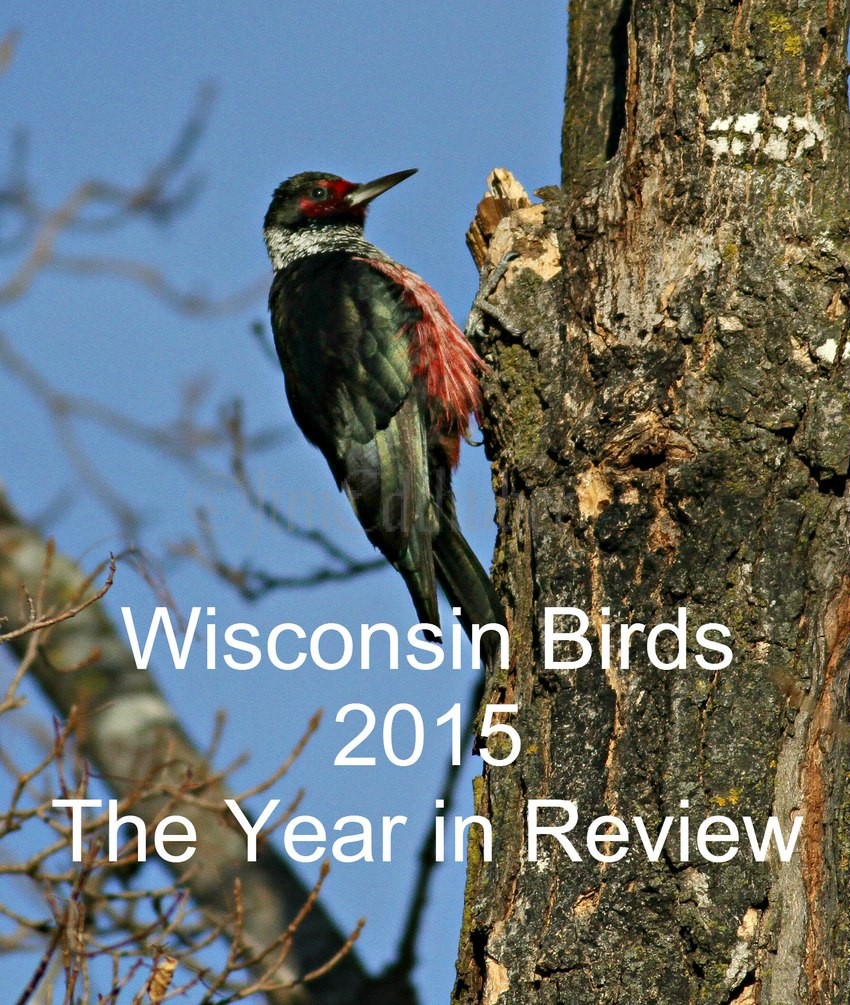
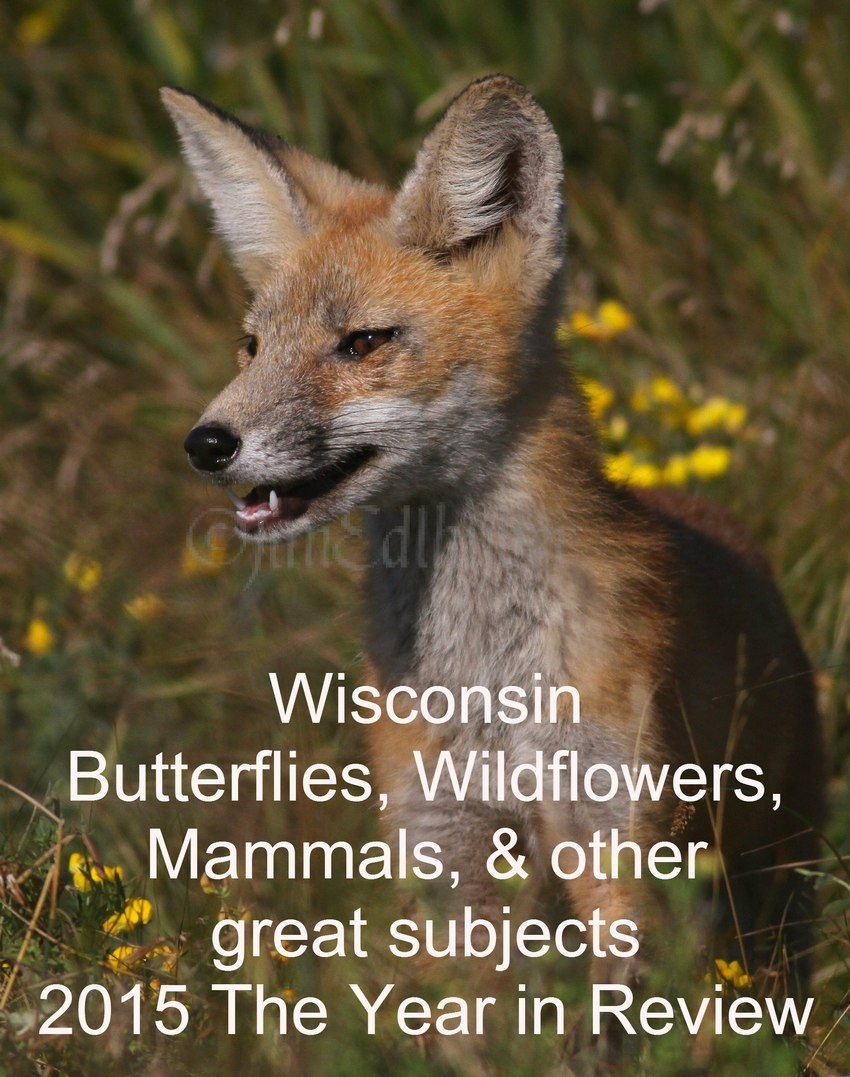
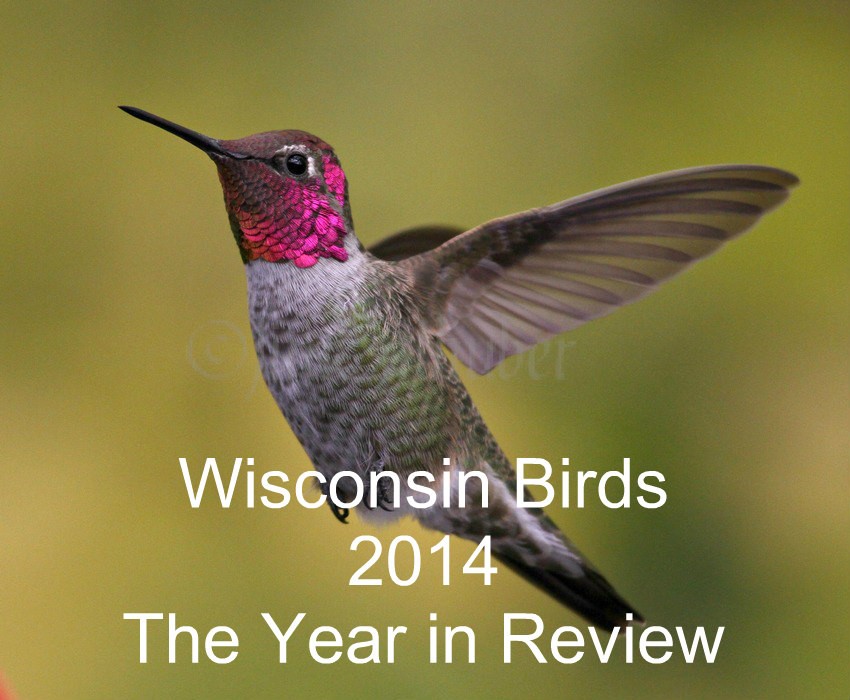
Love these photos. As I said the birds sure are drawn to you. How many feeders do you have out? Do you have problems with squirrels getting in the food?
Thank you for this information on the difference between leucism and albinism. I was always wondering about that as it seems more people have posted leucistic birds on the Wild birds of WI FB page.
Great shots of a really cool-looking dove. Thanks, Jim!
How beautiful…looks like it is spotted with snow!
Very interesting information Jim and what a bird so beautifully photographed.
You just can’t give up on interesting birds because we’re at year’s end! Great photos and info, Jim.
Never a dull moment, Jim. That is really a pretty dove. Thanks for sharing.And you really have clean windows!!!!😉
Beautiful! Thanks for sharing!
Oh my gosh!!! What a beautiful bird, it’s coloring so Winterish (is this a word, Lol!). Just think the lucky guy who gets her, wow, she’s beautiful and they mate for life!
Question was asked to me and I do not know – Can a leucistic bird pass the coloring onto offspring?
Beautiful bird and another great post. Additional knowledge for my curious mind. 🙂
So a Leucistic Mourning Dove was n the yard n a cat bearly got ahold of it n i saved it but its now hurt wat can i do to help it cuts